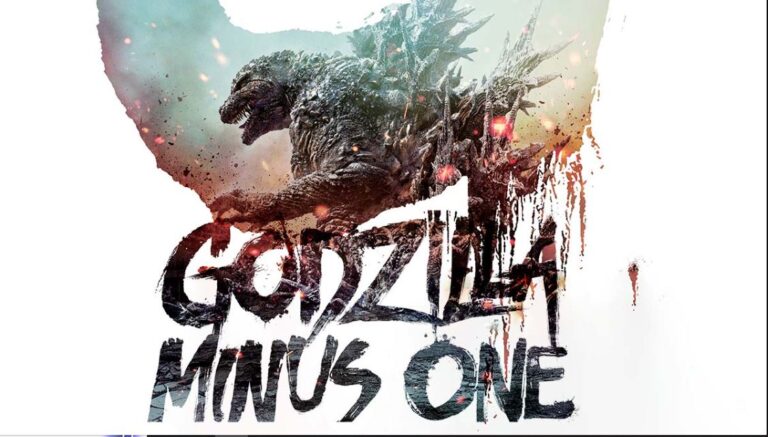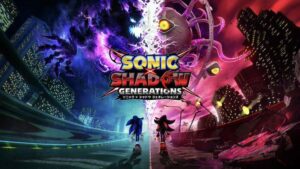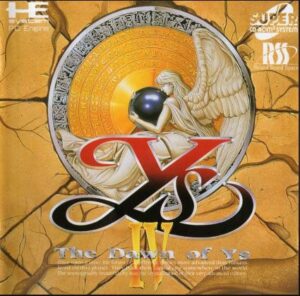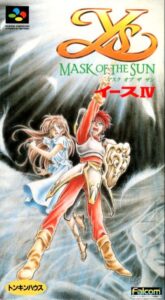Given the amount of things we have in production here at T2E I did NOT intend to return to Godzilla so soon after our previously held marathon. However, upon Minus One becoming available digitally and watching it for myself, the issue was out of my hands. Among the lifespan of the series this film is exceedingly unique not to mention an Oscar winning film in its own right. So, let us not wait any longer. This is Godzilla: Minus One!
Background & Pre-Production
2016 saw the release of Shin Godzilla, the first Japanese produced Godzilla film to be released in 12 years; the first since 2004’s Godzilla: Final Wars. The series wasn’t completely absent as 2014 saw the release of Legendary Pictures’ Godzilla, revitalizing Godzilla’s presence in the west and launching the Monsterverse. However, for Toho themselves following the success of Shin Godzilla there were numerous films put into production to capitalize on the success of said film, but these were ultimately cancelled as Toho felt they wouldn’t be worthy follow ups to Shin. As such, the production of a new Godzilla film was pushed back until after 2020. This was due in part to contract limitations on Legendary Pictures, preventing them from releasing a Toho brand film in the same year as Legendary Pictures.
Proper development of the film dates back to 2019 when Toho Producer Minami Ichikawa tapped filmmaker Takashi Yamazaki to direct the next film in the franchise. Yamazaki was also in charge of writing as well as being the visual effects supervisor. Minus One would mark the third time Yamazaki worked on a Godzilla themed production after 2007’s Always: Sunset on Third Street 2, a film that featured Godzilla, as well as 2021’s Godzilla the Ride: Giant Monsters Ultimate Battle.
The film itself wouldn’t receive its proper name until 2022 when it was revealed that it was to be a period piece set between 1945 and 1947 immediately after World War II ended, during the era of Japanese reconstruction. Minus One’s score was composed by Naoki Sato who worked on various projects such as Eureka Seven, Sword of the Stranger, Blood-C and Dragon Ball: Super Hero. Minus One had six producers with Ryunosuke Kamiki and Minami Hamabe taking the lead. Cinematography was overseen by Kozo Shibasaki, whilst the film was edited by none other than Ryuji Miyajima. Two production studios were involved in bringing the film to life; property owner Toho Studios alongside Robot Communications based out of Tokyo who was responsible for such projects as Parasite Eve, Always: Sunset on Third Street ‘64, as well as the live action YuYu Hakusho adaptation.
Synopsis & Writing
The story begins in 1945 near the end of World War II as Koichi Shikishima lands on Odo Island (a very significant location in the history of the Godzilla franchise) after fleeing his duty as a kamikaze pilot. Air raids against Japan have killed thousands, leaving the country in ruins. Yet that pales in comparison to the monstrous Godzilla emerging from the depths of the ocean that threatens not only the life Shikishima has managed to build, but all of Japan as well. Having left behind his duty once before, Shikishima now must commit to ensuring the safety of his loved ones and homeland.
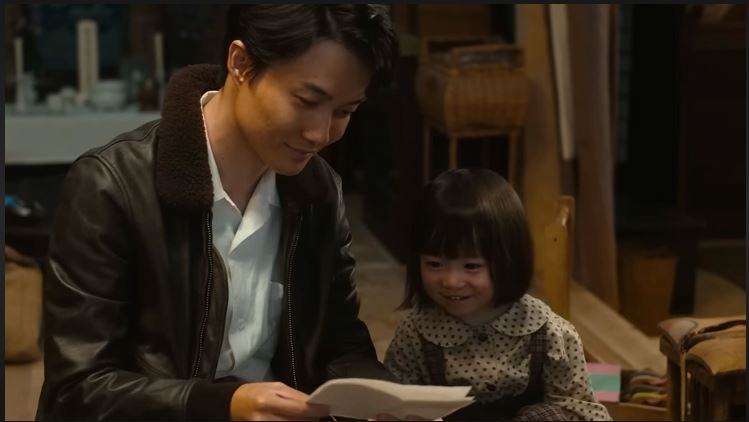
Minus One’s narrative is exceedingly unique amongst the franchise’s 70-year history, leaning wholeheartedly into a serious tone not explored since the original film. The 1954 original was set in the same year that saw a decade of reconstruction in Japan. So, we didn’t get a full view of all the devastation that Japan suffered at the end of the second world war. But here the wounds are very fresh and raw. We actually see the nuclear bomb being dropped in Bikini Atoll, a powerful moment to put in a film.

More so than any other film in the franchise, Minus One is a character-driven affair with Godzilla being portrayed as a full-on villainous force of nature. I don’t begrudge Toho’s more light hearted films that wished to portray the king of the monsters in a more sympathetic or heroic light, but that is not the case here. Godzilla in this film is a malicious force of nature that revels in the destruction it causes. We haven’t seen Godzilla portrayed in such a way in quite some time. The most recent example of this characterization was 2001’s Godzilla, Mothra and King Ghidorah: Giant Monsters All Out Attack. This is very ironic as Yamazaki cited said film as the major inspiration in terms of how they characterized Godzilla.
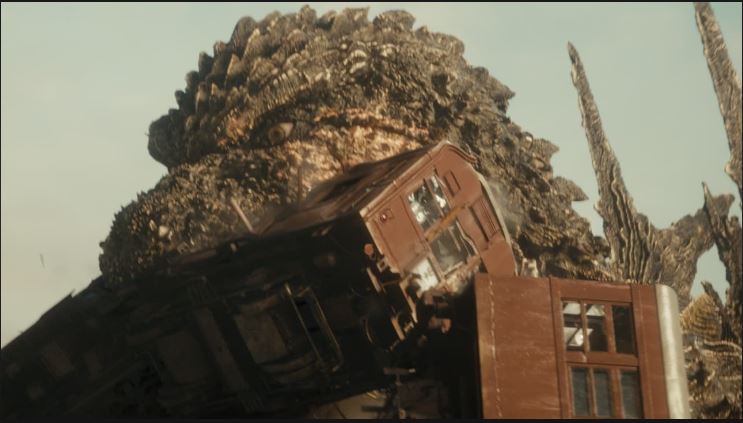
However, the heart and soul of this film is our protagonists Shikishima and Noriko in their struggles to rebuild their lives in the aftermath of the second world war. Godzilla is merely an obstacle for our characters to overcome and Minus One casts aside a lot of the stifling traditions associated with previous franchise films in order to tell a more concise character-driven story. This is because its priority is the characters. The film succeeds as a strongly written film and not just a good monster movie. Major themes of the film are how the war never ended for some, and that of survival. Minus One sets a high bar for the franchise in terms of writing and I look forward to seeing what comes next in the series.
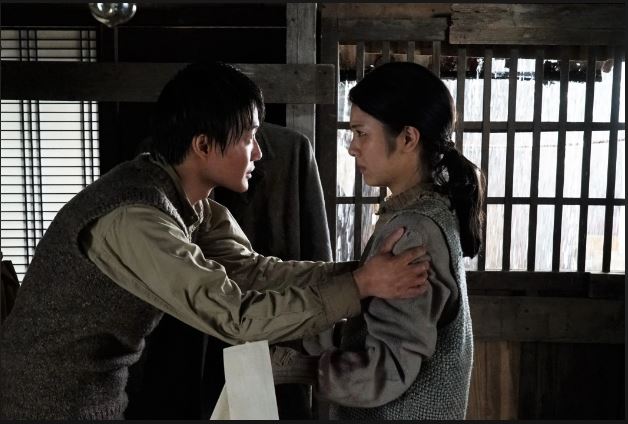
Presentation & Score
Now, Minus One marks a landmark for the franchise as this is the first time a Godzilla film has won an Oscar, specifically for its visual effects. Traditionally, Godzilla has been a practical effect, portrayed by a man in rubber suit against miniature sets. This was the case in the first 50 years of the franchise, with Godzilla: Final Wars being the final film in which the character was portrayed by a man in a rubber suit. Since 2016’s Shin Godzilla the king of the monsters has been represented by a visual effect. However, this is the first time I’ve been personally sold on the idea of Godzilla being a digital effect. Despite being computer generated, Godzilla has never felt more real, as there is a genuine weight to him and his movements, which you are hard pressed to find in other films.

And as far as designs go, this is easily one of the strongest interpretations in the franchise, as Godzilla has never been more intimidating visually. Committing fully to computer generated effects allows for complex shots and maneuvers that would not have been possible with a man in a rubber suit. The film had no less then 610 visual effects shots handled by a crew of 35 artists. The film’s effects presentation is all the more impressive given that Minus One had a production budget of less than $15 million USD, which puts films with MUCH higher effects budgets to shame. The film, despite its tactical use of visual effects, made use of traditional miniature sets such as the set for war torn Tokyo.
The majority of the score was overseen by Naoki Sato who had collaborated with Yamazaki on numerous films prior to Minus One. Sato cited two major sources of inspiration for the score. These were Studio Ghibli as well as the very well-known Godzilla franchise composer Akira Ifukube who composed for Godzilla from 1954-2004 with very few exceptions before he passed away in 2006. Both Shin Godzilla and Minus One pay homage to Ifukube’s work with new arrangements of classic Ifukube tracks. These homages are not overpowering, as Sato manages to maintain a unique sound that is distinct to this film.
Upon release in October 2023 the film grossed $48.2 million USD across its Japanese theatrical run whilst additional territories brought in another $67.6 million USD. Bringing the worldwide total box office draw to $115.8 million. Minus One was especially successful in American and Canadian markets seeing several theatrical run extensions and becoming a sleeper hit. Minus One also dethroned Shin Godzilla as the highest grossing Japanese Godzilla film in the franchise.
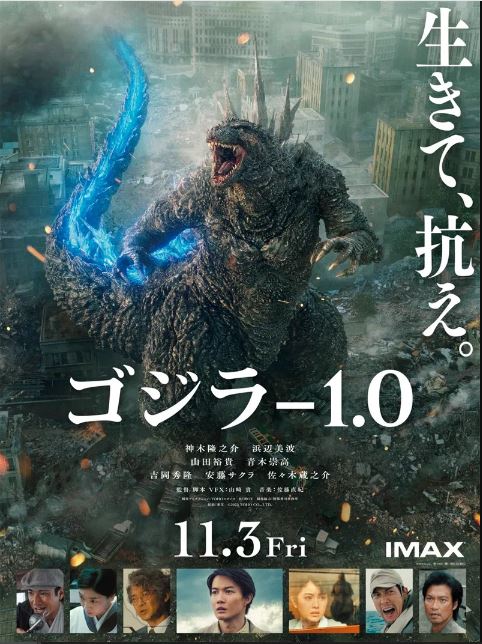
A month following the release of the film Toho’s CEO, Hiroyasu Matsuoka released a statement detailing that the film exceeded company expectations on a worldwide scale, bringing Toho’s yearly theatrical income profits to over 100 billion Yen ($680 million) for the first time in the company’s history. Minus One was also the fifth highest grossing Japanese film of 2023, a fact all the more impressive considering it released in late October with less than three months left in the calendar year
Conclusion
Minus One stands shoulder to shoulder with other acclaimed films in the franchise despite it’s relative recency. The film succeeds not only as a strong Godzilla film but as a strong film period. The film received well-earned critical and financial acclaim and brought newfound respect and appreciation for one of film’s longest-running franchises. I wholeheartedly recommend Minus One to everyone!
Patron Shout-Out
I wish to give special thanks to all of our loyal Patreon supporters who support our content week after week:
Francesco
Lisa
If you wish to shape the voice of our content and receive other exclusive benefits, consider following us on Patreon!

